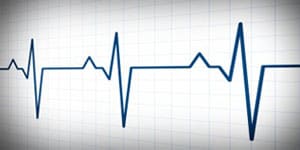Indoor rowing is an important training tool for rowers. Although mimicking the movement patterns of on-water rowing, the physiological responses (including energy system contribution) are not quite the same.
 de Campos Mello et al. (2009) conducted a study to assess energy system contribution during 2000 m race simulations on water, on fixed rowing ergometer and on slide ergometer. Eight experienced male rowers (age 23.8 ± 5.5 years, body mass 81.4 ± 6.7 kg, height 184.0 ± 5.8 cm) participated in each of the disciplines. The contribution of the aerobic, anaerobic alactic and anaerobic lactic systems were calculated.
de Campos Mello et al. (2009) conducted a study to assess energy system contribution during 2000 m race simulations on water, on fixed rowing ergometer and on slide ergometer. Eight experienced male rowers (age 23.8 ± 5.5 years, body mass 81.4 ± 6.7 kg, height 184.0 ± 5.8 cm) participated in each of the disciplines. The contribution of the aerobic, anaerobic alactic and anaerobic lactic systems were calculated.
As expected, significantly higher metabolic work was observed during on-water rowing (851 ± 82 kJ) compared to ergometer (674 ± 60 kJ) and ergometer with slide (663 ± 65 kJ), due to a longer time taken to finish the race (515 ± 11 s; 398 ± 10 s; 402 ± 15 s, respectively). When relative energy expenditure was considered, no differences were observed between the three disciplines: 99 ± 9 kJ•min-1; 99.6 ± 9 kJ•min-1; 100.2 ± 9.6 kJ•min-1). The contributions of the aerobic, anaerobic alactic and anaerobic lactic systems were: water = 87 ± 2%; 7 ± 2% and 6 ± 2%; ergometer = 84 ± 2%; 7 ± 2% and 9 ± 2%; and ergometer with the slide = 84 ± 2%; 7 ± 2% and 9 ±1%.
What to learn from this?
The energy system contribution and the metabolic profile in all three disciplines are similar when time to perform the distance is considered. Therefore, it could be suggested that all disciplines can be used equally for training. A longer, perhaps 2500 m test should be applied on ergometers for valid comparable results to single sculling 2000 m on water.
| Table. Energy system contribution and total energy expenditure during performances in the 2000 m in the different situations | |||
| Water | Ergometer with slide | Ergometer without slide | |
| Aerobic | |||
| Absolute (kJ) | 736 ± 73 | 554 ± 52a | 563 ± 46a |
| Relative (%) | 87 ± 2 | 84 ± 2a | 84 ± 2a |
| Relative to time (kJ·min-1) | 85.8 ± 7.8 | 83.4 ± 7.2 | 84.0 ± 7.8 |
| Lactic | |||
| Absolute (kJ) | 52 ± 13 | 47 ± 13 | 49 ± 15 |
| Relative (%) | 6 ± 2 | 7 ± 2 | 7 ± 2 |
| Relative to time (kJ·min-1) | 6.0 ± 1.2 | 7.2 ± 1.8 | 7.2 ± 2.4 |
| Alactic | |||
| Absolute (kJ) | 63 ± 17 | 62 ± 12 | 57 ± 13 |
| Relative (%) | 7 ± 2b | 9 ± 1 | 9 ± 2 |
| Relative to time (kJ·min-1) | 7.2 ± 1.8 | 9.0 ± 1.8 | 8.4 ± 2.4 |
| Total energy expenditure (kJ) | 851 ± 82 | 663 ± 65a | 674 ± 60a |
| Relative energy expenditure (kJ·min-1) | 99.0 ± 9.0 | 99.6 ± 9.0 | 100.2 ± 9.6 |
| The values are mean ± standard deviation; a Statistically lower than in the water (P ≤ 0.05); b Statistically lower than on the ergometers | |||
| de Campos Mello et al. 2009 | |||
Source
de Campos Mello F, de Moraes Bertuzzi RC, Grangeiro PM, Franchini E. Energy systems contributions in 2,000 m race simulation: a comparison among rowing ergometers and water. European Journal of Applied Physiology 2009; 107: 615–619.
